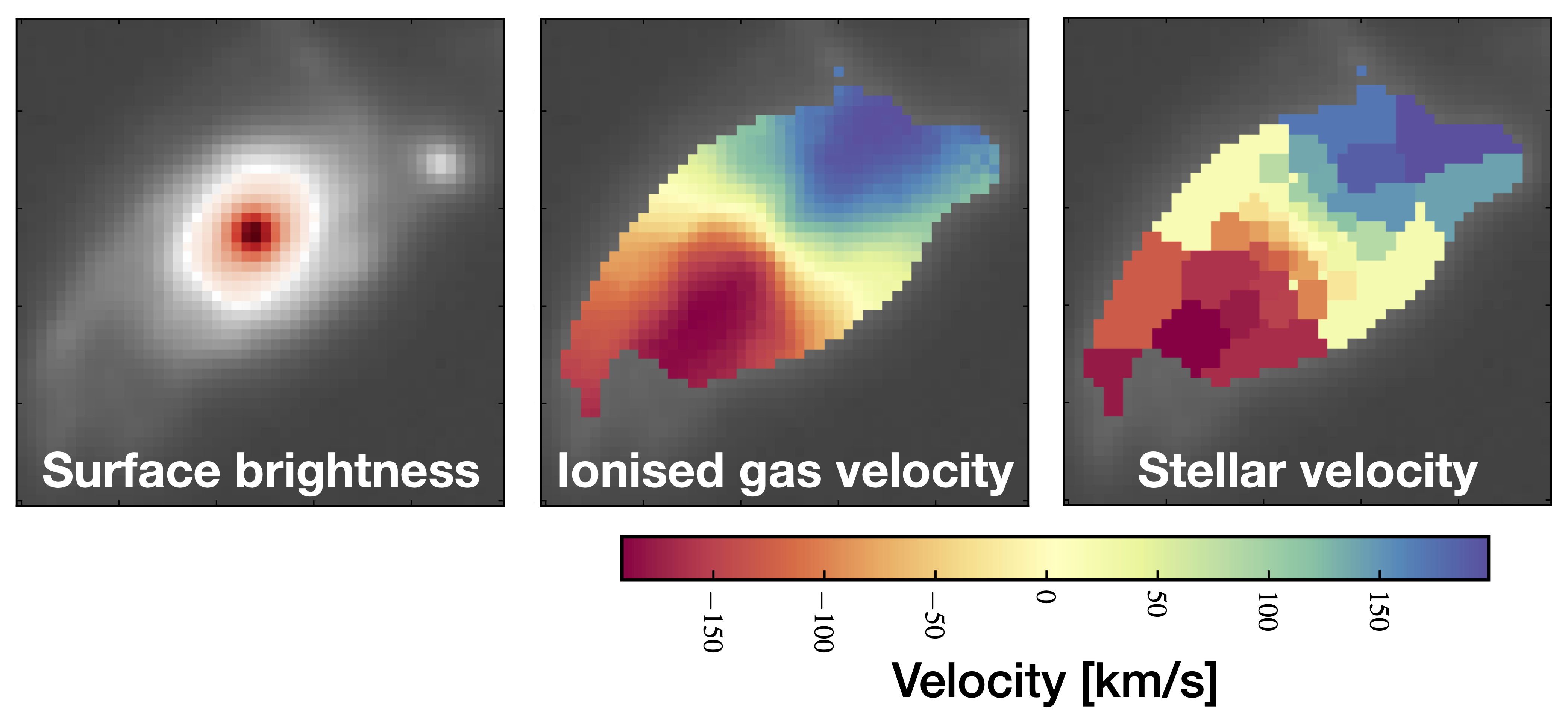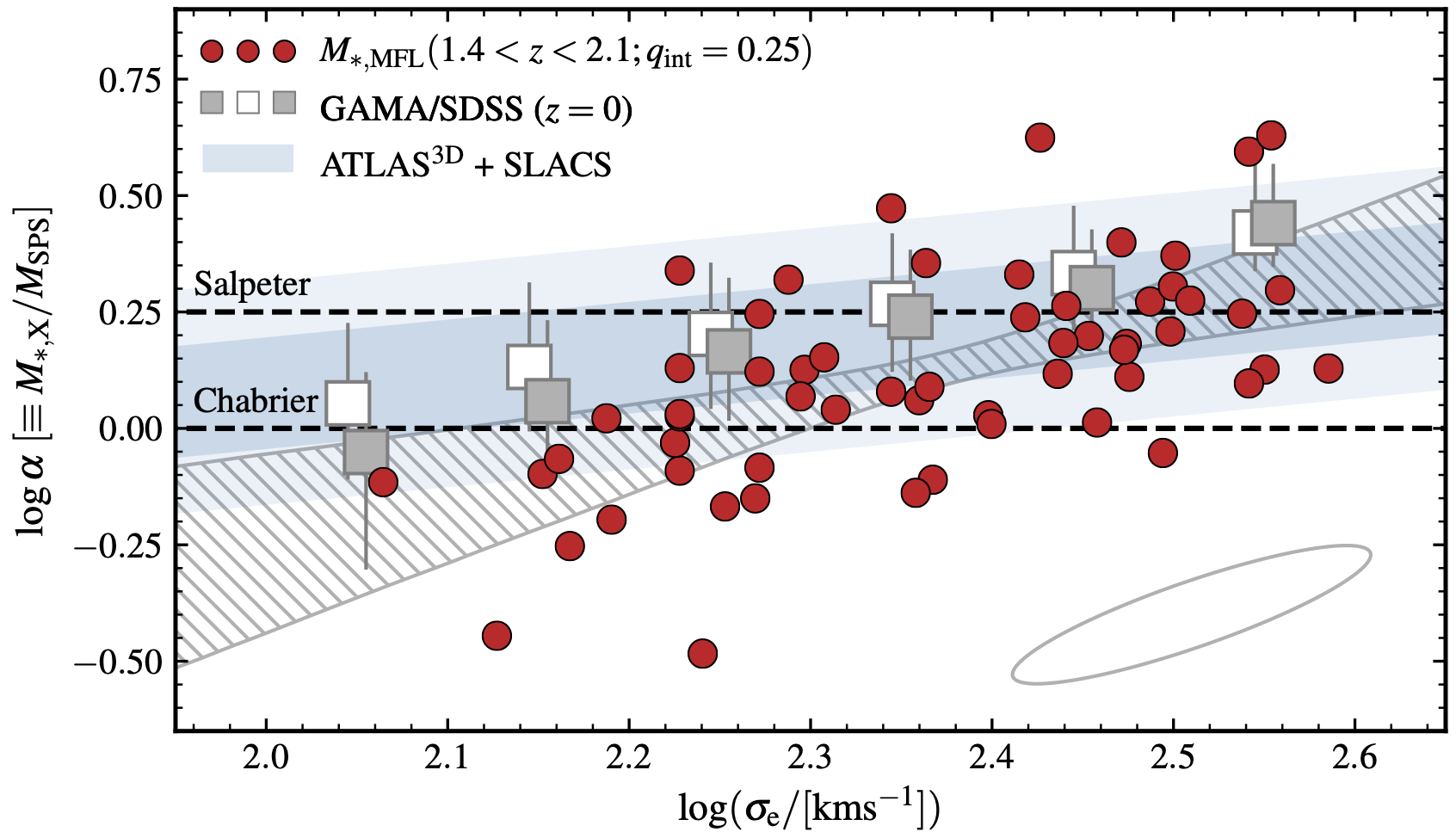Research
Galaxy Evolution
My research is focused on understanding how galaxies evolve over cosmic time using deep spectroscopic and photometric datasets from the ESO Very Large Telescope, Hubble Space Telescope, and soon the James Webb Space Telescope. I am particularly interested in connecting nearby quiescent galaxies to their progenitors at high redshift.
Resolving how galaxies transform during cosmic afternoon
The majority of integral field spectroscopic (IFS) surveys designed to probe stellar properties have focused their efforts at relatively low redshift. However, optical IFS instruments fed by 8-10 metre class telescopes such as MUSE@VLT and KCWI@Keck offer the sensitivity required to extend such studies to larger lookback times. It is exactly this capability that underpins the ongoing MAGPI survey, which is using MUSE and its ground layer adaptive optics system to obtain resolved spectroscopic data for galaxies at z~0.3 when the Universe was only 10 billion years old.
These data allow us to study the distribution, kinematics, and chemistry of stars and the interstellar medium on comparable spatial scales to that of large IFS surveys at low redshift (e.g. SAMI, MaNGA), allowing us to better understand how galaxy properties evolve during the “winding down” epoch at z < 1. The figure below shows an example comparison of gas and stellar velocity fields for one galaxy in the MAGPI fields. For more information see Foster et al. 2021

Probing evolution of the stellar initial mass function
In nearby galaxies, deep photometric and spectroscopic data can be used to study the relationship between galaxies, their stellar populations, and the properties of their dark matter halos in great detail. At higher redshift such detailed observations are challenging, yet understanding the changing balance between stars and dark matter is critical to probing how galaxies evolve and assemble. I am especially interested in constraining possible variation and evolution of the stellar initial mass function (IMF), as it relates to the formation environments of stars at very early times. In Mendel et al. (2020) I used a combination of deep near-infrared spectra taken with KMOS@VLT, HST imaging, and data from the literature to study evolution of the IMF in quiescent galaxies from z~1.7 to z=0. The results of this work are shown in the Figure below, which compares the so-called IMF offset parameter alpha as a function of stellar velocity dispersion.

These data represent the state-of-the-art for quiescent galaxy studies near cosmic noon, but will soon be surpassed by JWST. I am a Co-I on one such program that will push such detailed measurements to higher redshift.
Survey Programs
On the way to pursuing the research projects described above, I have had major roles in a number of large surveys with the ESO Very Large Telescope, including KMOS3D, VIRIAL, and the KMOS Cluster survey. I have one of 5 PIs of the MAGPI survey, at 340 hour ESO Large Program using the MUSE integral field spectrograph. MAGPI aims to understand the physical mechanisms that transform massive galaxies in the distant Universe to those we see today. More information about the MAGPI survey can be found here.
Instrumentation
My research relies on cutting edge instruments, and over time I have found that working directly with instrument teams at an early stage is the surest way to continue to push my research forward. I am engaged in a number of next generation instrumentation programs, including as Project Scientist for the Giant Magellan Telescope Integral Field Spectrograph (GMTIFS) and as a science team member for the MCAO Assisted Visible Imager and Spectrograph (MAVIS).
